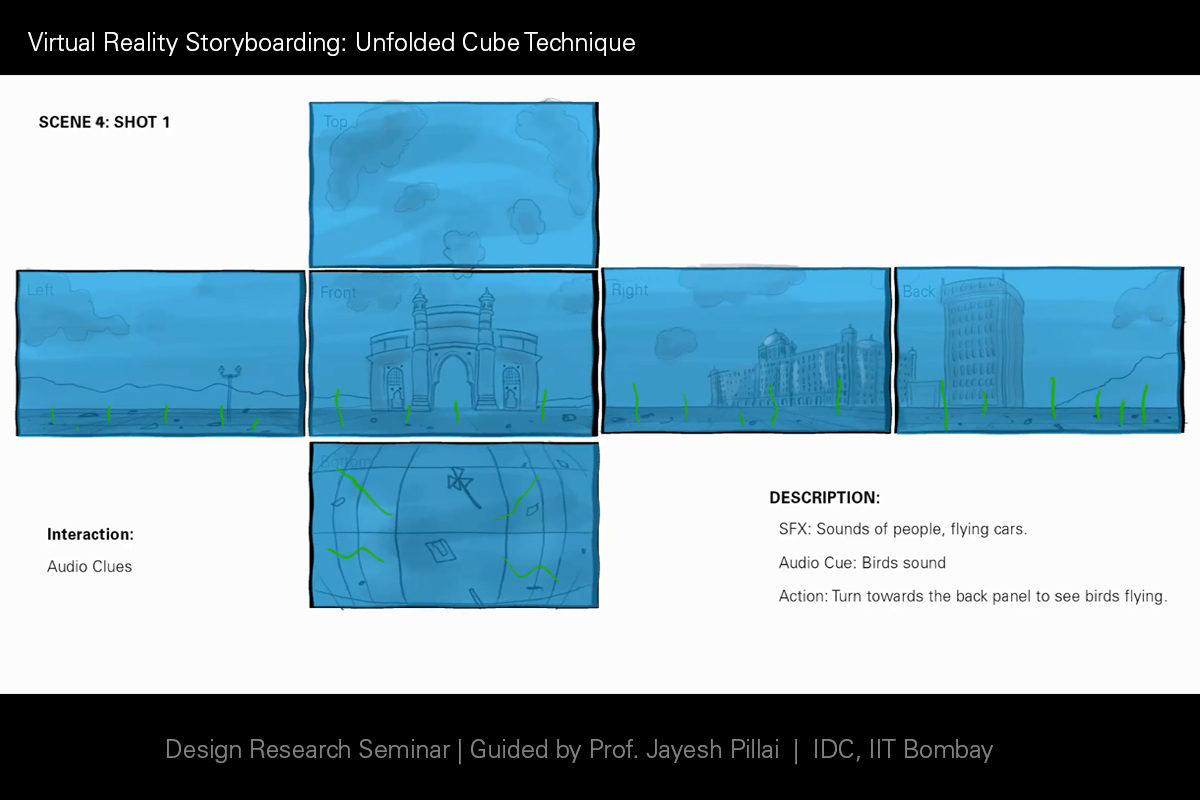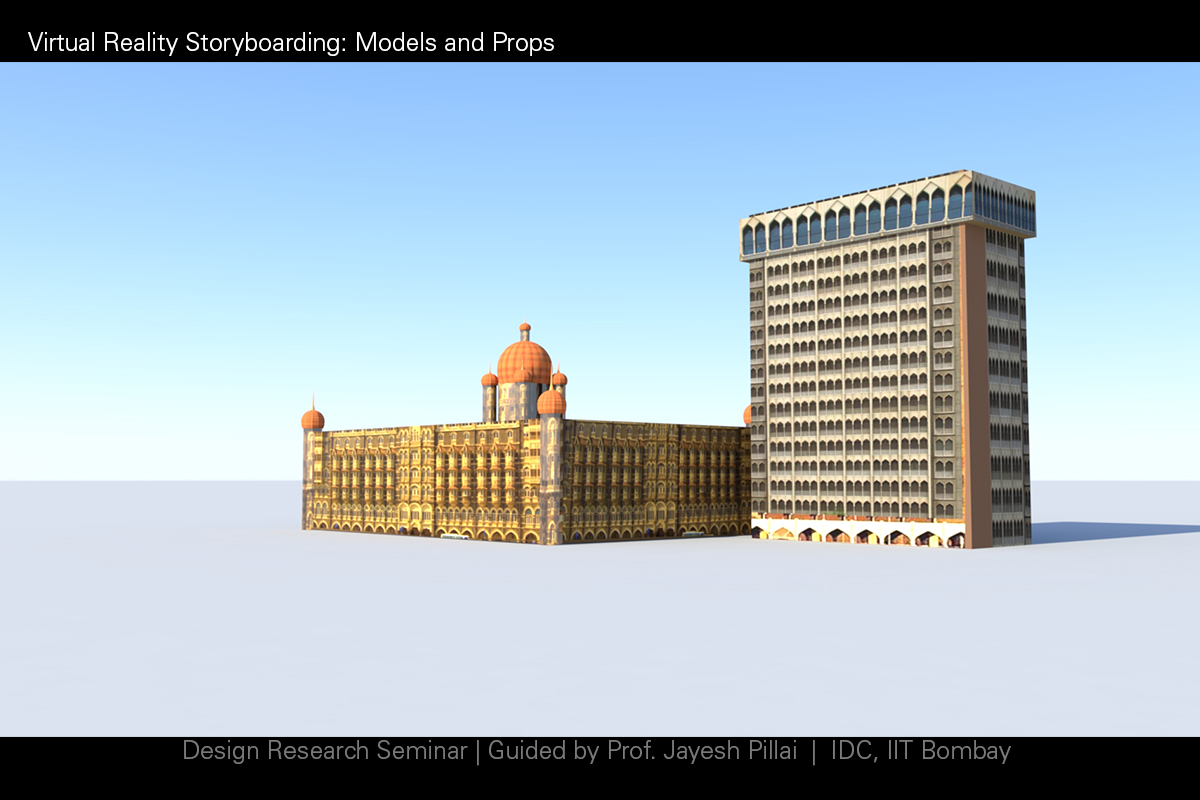Name: Gokul C J
Guide: Prof. Jayesh Pillai
Course: Interaction
Credits: Himanshu J. Hazarika
DRS – Storyboarding and Animation Techniques for Storytelling in 360 Degrees
Virtual Reality as a medium gives the user an immersive experience of the story by letting the user enter the virtual world in which the story unfolds.A poorly constructed VR story lets the user move in all directions, thereby missing the story completely, which acts against the intended objective of the VR narrative. A proper storyboarding of the virtual reality video or game is, thereby, necessary to give the audience the experience they would love.
This project sums up the planning processes that were undergone and the storyboarding techniques that were used to create the 360° animated video.
Storyboarding for Virtual Reality is different from the conventional storyboarding techniques used in frame by frame movies. Here, the user is immersed within the movie, so the events happen all around him. In order for the viewer to not miss any event, proper visual and audio cues have to be added while storyboarding. Several techniques for storyboarding have been analysed and the Unfolded Cube method was selected for the purpose of creating the animated VR video.
Here the top and bottom views appear with the front view and are placed vertically, and the side views are horizontally placed.
A number of props and locations were modeled in Maya. The renderer used was Mental Ray Renderer. 360° stereoscopic images were rendered out from Maya using an external plugin called Domemaster 3D. The final images (left and right) were composited in compositing software to render out the final video. This, when viewed in the Head Mounted Display, gives the virtual reality immersive effect to the viewer.

















